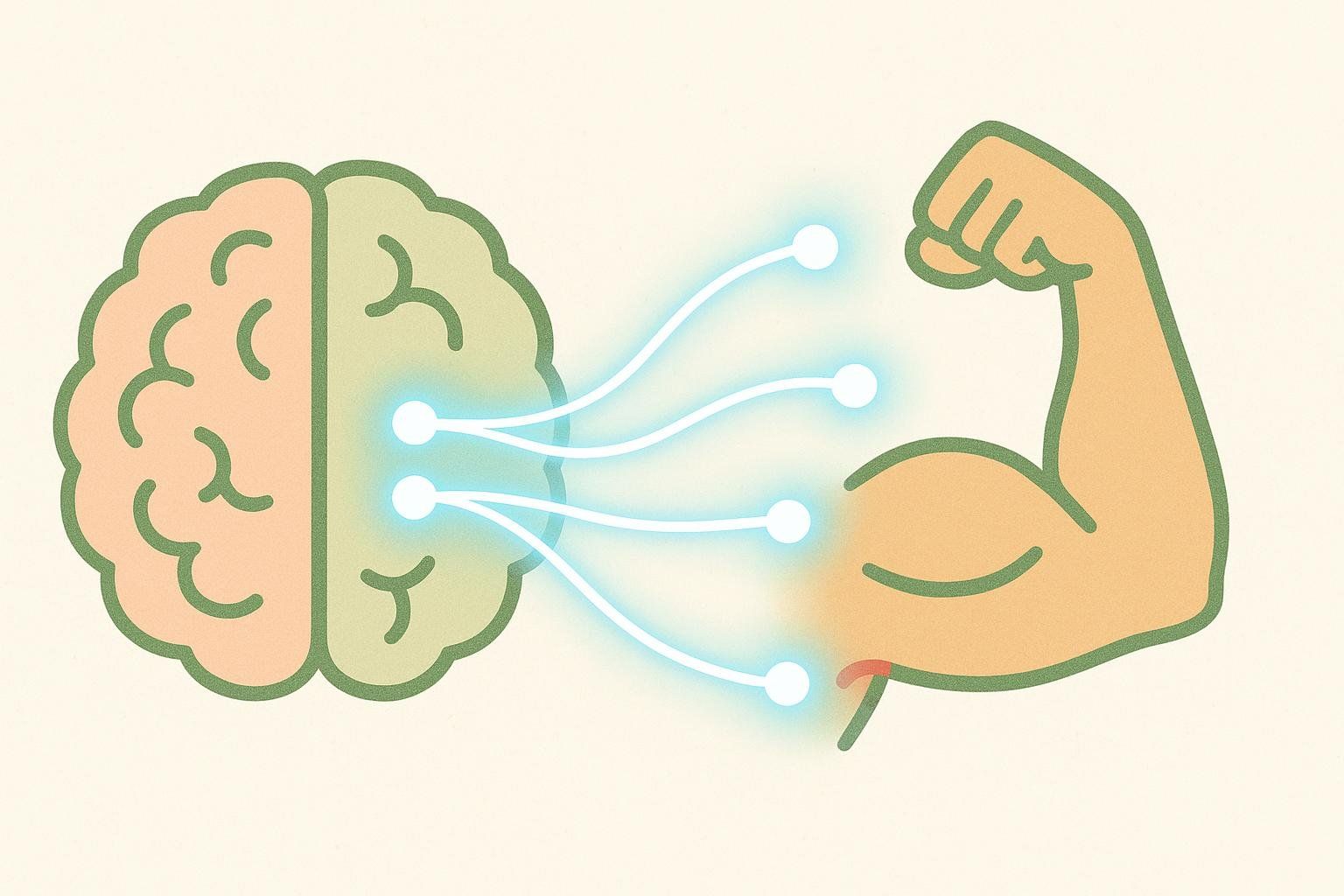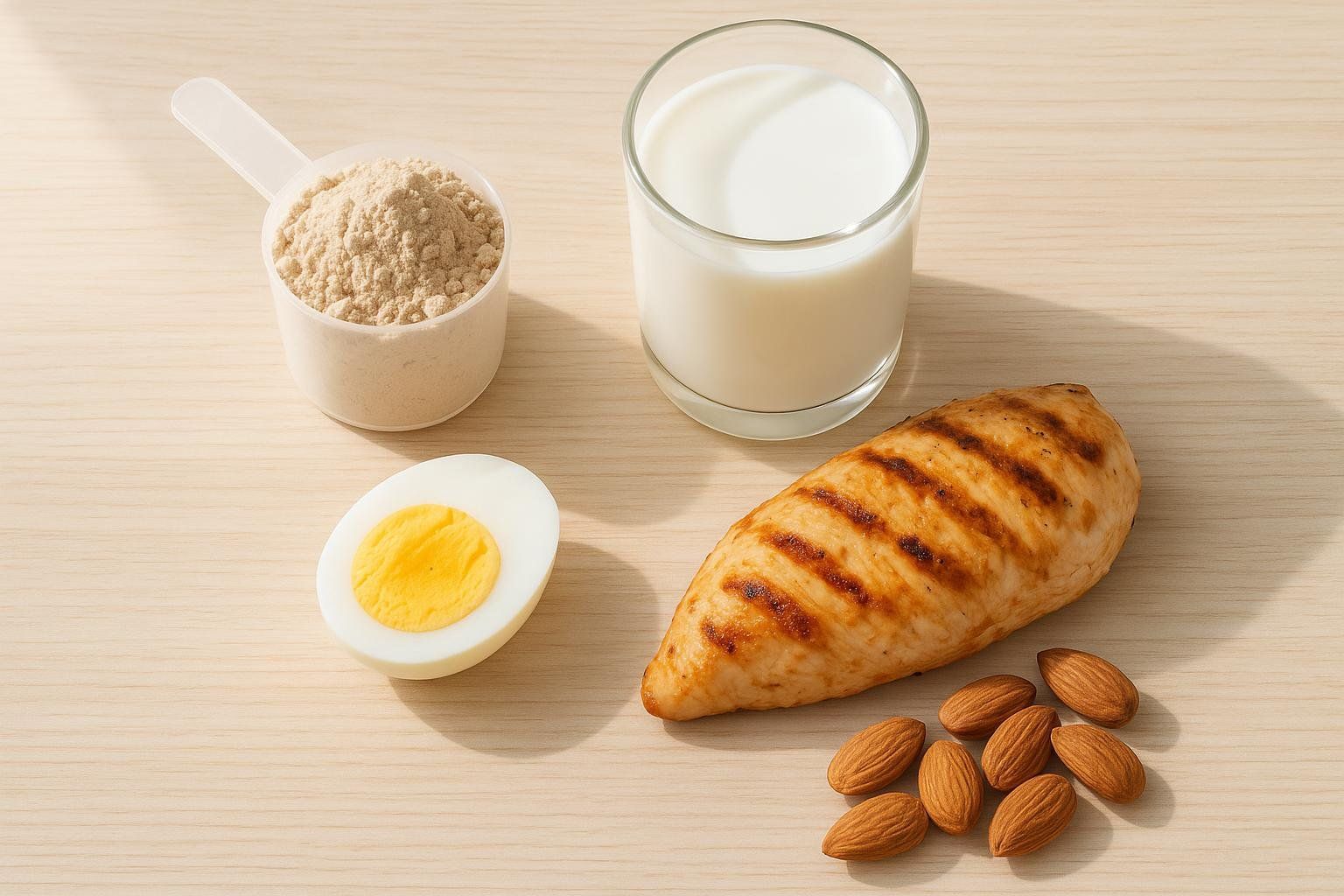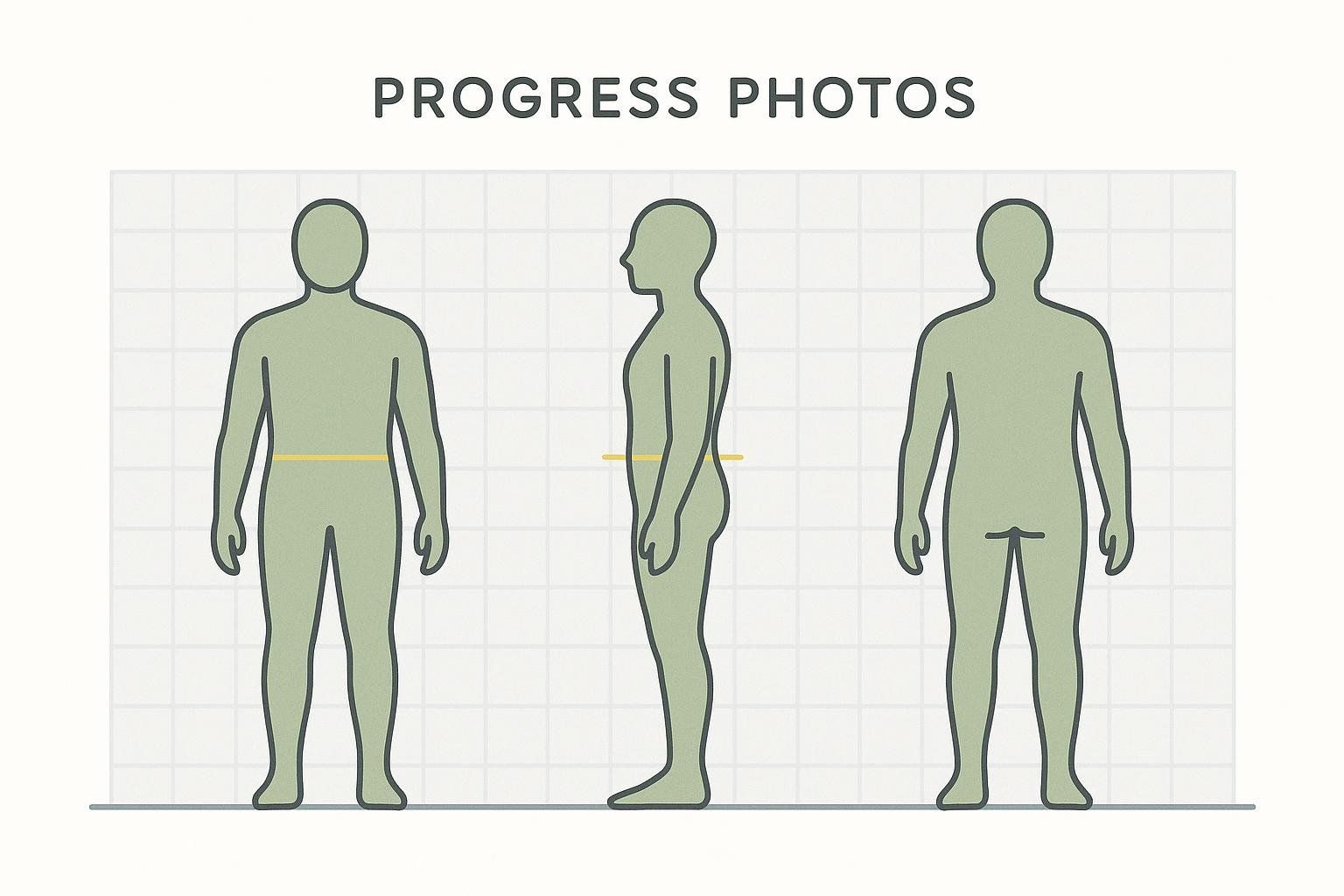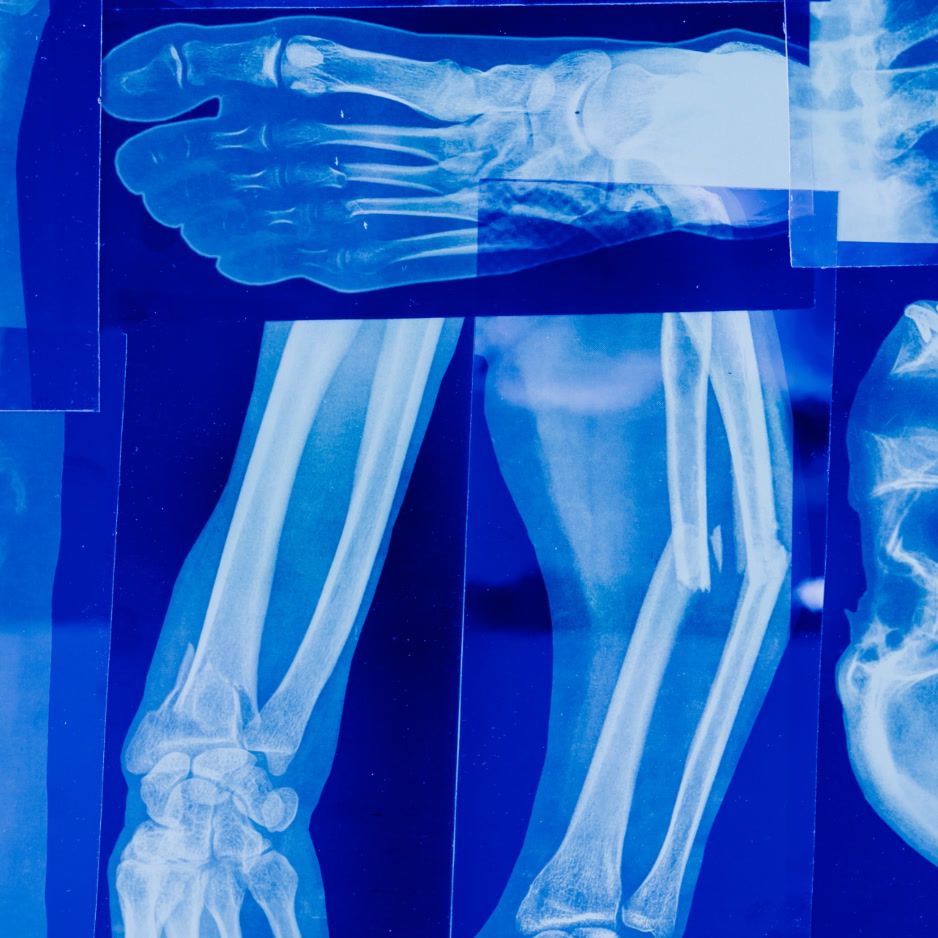How Long Does It Take to See Results from Strength Training?

How Long Does It Take to See Results from Strength Training?
Starting a strength training program is one of the best decisions you can make for your health and physique—but let's face it, we all want to know: when will I actually see results?
The timeline for strength training results varies based on your goals, training experience, and what you mean by "results." But here's the good news: you'll feel improvements in strength and energy within just a few weeks, and visible changes typically appear within 2-3 months of consistent training. When it comes to actual muscle gain, research demonstrates that consistent strength training leads to measurable muscle development, with beginners experiencing the most dramatic changes during their first year of training.
This guide breaks down the strength training timeline with research-backed insights, real-world examples, and personalized estimates to help you set realistic expectations for your journey.
TL;DR: Your Strength Training Results Timeline
| Phase | Timeline | What You'll Notice | Why It Happens |
|---|---|---|---|
| Neural Gains | 1-4 weeks | Significant strength increases; better coordination | Your nervous system learns to recruit muscle fibers more efficiently |
| Early Muscle Changes | 4-8 weeks | Muscles feel firmer; clothes fit differently | Increased muscle protein synthesis and decreased inflammation |
| Visible Transformation | 8-12 weeks | Noticeable muscle definition; measurable fat loss | Muscle hypertrophy becomes visually apparent |
| Strength Plateaus Begin | 12-24 weeks | Progress slows but continues; new personal records | Body has fully adapted to the current training stimulus |
Individual results vary based on training consistency, nutrition, sleep, genetics, and starting fitness level.
Muscle Gain Expectations (Beginners, First Year):
- Women: ~1 lb/month average
- Men: 1-2 lbs/month average
The Science Behind Your Strength Training Timeline
Weeks 1-4: Neural Adaptations Take Charge
When you first start strength training, your brain is essentially learning a new language—the language of coordinated muscle movement. During this phase, you might notice:
- Dramatic strength increases (often 20-40% improvements in major lifts)
- Better exercise form and coordination
- Increased energy and mood
- Improved sleep quality
These early gains aren't primarily from muscle growth—they're from your nervous system becoming more efficient at recruiting muscle fibers.

Research demonstrates significant improvements in neural activation and coordination during the first weeks of resistance training. Additionally, studies show that untrained individuals can experience explosive increases in muscle protein synthesis during this period, setting the stage for everything that follows.
Weeks 4-8: The Muscle Building Engine Starts
This is where the magic begins. Your body has adapted to the training stimulus, and now you're entering the sweet spot of muscle development:
- Muscles start feeling firmer and more defined
- Scale weight might stay stable while body composition improves
- Strength gains continue but at a more moderate pace
- Energy levels stabilize at their new, higher baseline
A 2024 study on resistance training in young women found that just 8 weeks of training led to significant improvements in muscle thickness, maximal strength, and power—with the moderate-volume groups (4x/week) showing the most dramatic improvements.
Weeks 8-12: The Visual Transformation
This is the phase most people think of when they imagine "seeing results." After 2-3 months of consistent training:
- Visible muscle definition in trained areas (arms, shoulders, legs)
- Fat loss becomes apparent if you're in a caloric deficit
- Clothes fit differently—tighter in the shoulders and arms, looser around the waist
- Cardiovascular improvements become noticeable
According to Cleveland Clinic research, this is when "slight visual changes in muscle definition may become noticeable" for most people. A comprehensive meta-analysis of resistance training studies found that participants gained an average of 3.3 pounds (1.5 kg) of muscle mass over 8-24 weeks of training—solidifying that this timeframe is when meaningful muscle gains become measurable.
Your Timeline Estimates by Experience Level
Complete Beginner (Never Done Resistance Training)
Expect the fastest initial results
Weeks 1-2: Coordination and form improvements
Weeks 3-6: Substantial strength increases as neural pathways develop
Weeks 6-12: Visible muscle definition
3-6 months: This phase of newbie gains begins to plateau
Goal-Based Timelines:
- Pure strength focus: Significant increases in major lifts within 8-12 weeks
- Muscle definition: Noticeable changes in arms, shoulders within 6-10 weeks
- Body recomposition: Fat loss with muscle gain becomes evident at 8-16 weeks
Returning After a Break (6+ Months Off)
Muscle memory accelerates your comeback
Weeks 1-2: Rapid strength return
Weeks 3-6: Significant performance recovery as muscle memory kicks in
Weeks 6-12: Begin to surpass previous strength levels
Goal-Based Timelines:
- Strength recovery: Return to 80-90% of previous lifts in 4-8 weeks
- Muscle definition: Visible changes in 4-8 weeks
- Body composition: Dramatic improvements in 8-12 weeks
Experienced lifter (2+ Years)
Progress is steady but requires more strategic approach
Weeks 4-8: Modest strength gains
Weeks 8-16: Noticeable muscle size increases
3-6 months: Need for periodization training
Goal-Based Timelines:
- Strength plateaus: May need 12-16 weeks for significant PRs
- Physique changes: Subtle improvements over 12-24 weeks
- Body recomposition: Requires advanced strategies and longer timelines
Factors That Speed Up (or Slow Down) Your Results
The Accelerators
Consistent training frequency: Consistency is the key driver of results—regular training sessions trump occasional intense workouts. While research shows that even 30-60 minutes of strength training per week can provide general health benefits, meaningful adaptation requires sustained, regular stimulus over time.

Adequate protein intake: The International Society of Sports Nutrition recommends 1.4-2.0 g/kg body weight per day for building and maintaining muscle mass, with higher intakes up to 3.0 g/kg potentially beneficial for body composition improvements.

Quality sleep: Studies show that even one night of sleep deprivation can reduce muscle protein synthesis by 18%.
Progressive overload: Gradually increasing weight, reps, or sets ensures continued adaptation.
The Roadblocks
Inconsistent training: Missing sessions breaks the adaptation cycle
Inadequate recovery: Overtraining can actually slow progress
Poor nutrition: Without sufficient protein and calories, muscle growth stalls
Chronic stress: Elevates cortisol, which interferes with muscle building
Real-World Results: 3 Timelines
To see how these principles apply in the real world, let's look at a few common scenarios:
Alex, 28: The Gym Newbie
Goal: "I want to look more toned and feel stronger"
Week 2: Alex progressed from struggling with an unloaded barbell to successfully squatting with weight plates.
Week 6: Alex noticed his work shirts fitting tighter around the shoulders and chest.
Week 12: Alex could clearly see upper body definition in his arms and shoulders for the first time.
Sarah, 34: The Postpartum Mom
Goal: "I want to regain my pre-pregnancy strength and energy"
Week 3: Sarah found she could carry her toddler upstairs without the back strain that had plagued her since pregnancy.
Week 8: Sarah's chronic lower back pain resolved completely.
Week 16: Sarah achieved a deadlift personal record that exceeded her pre-pregnancy strength levels.
Mark, 45: The Experienced Lifter
Goal: "I've hit a plateau and want to break through"
Week 4: After switching to a new periodized program, Mark broke through his bench press sticking point with a 15-pound increase.
Week 10: Mark's progress photos revealed visibly fuller chest and shoulder muscles.
Week 20: Mark achieved his goal of a 315-pound squat (three plates).
How to Track Your Progress Like a Pro
The scale can be misleading during strength training because muscle weighs more than fat. Here are better methods:
Strength Metrics
- Log your lifts: Track weight x reps for major compound movements
- 1-rep max estimates: Use calculators to track strength progression
- Rep count improvements: More reps at the same weight = strength gains
Body Composition Changes

- Progress photos: Same lighting, poses, and time of day
- Measurements: Chest, arms, waist, thighs
- DEXA scans: Gold standard for tracking muscle and fat changes
Performance Indicators
- Resting heart rate: Often decreases as fitness improves
- Energy levels: Sustained throughout the day
- Sleep quality: Better recovery and mood
- How clothes fit: Often the first noticeable change
When to Expect Plateaus (And How to Break Through)
After that initial honeymoon phase, progress naturally slows. Here's when to expect plateaus and how to handle them:
Early Plateaus: Adjusting Your Initial Program
- Switch from linear progression to periodized training
- Add new exercises or rep ranges
- Consider working with a qualified trainer
Intermediate Plateaus: Introducing Advanced Strategies
- Implement deload weeks
- Focus on weak points with specialized training
- Track more detailed metrics beyond just weight lifted
Advanced Plateaus: A Long-Term Approach
- Accept that progress will be measured in months, not weeks
- Focus on consistency and injury prevention
Common Questions About Strength Training Results
"Will I see results faster if I train every day?"
No—and you might actually see slower progress. Recovery research shows muscles need 48-72 hours to fully recover between intense training sessions. Most people see optimal results training each muscle group 2-3 times per week.
"I'm gaining weight but getting stronger—should I be concerned?"
This is a common and often positive sign, especially for beginners. If you're new to training or returning after a break, you're likely gaining muscle while potentially losing fat. The scale might show weight gain, but your body composition is improving dramatically. A DEXA scan is the most accurate way to track these changes—it precisely measures how much muscle you're gaining versus fat you're losing, giving you the real picture beyond misleading scale numbers.
"How do women's results differ from men's?"
The timeline is remarkably similar, but the magnitude can differ. Research shows that males and females adapt similarly to resistance training when strength gains are expressed relative to lean mass. Additionally, studies found no significant difference in the rate of relative upper body strength gains between genders. However, men typically start with higher absolute strength due to larger muscle mass.
"Can I build muscle and lose fat at the same time?"

Yes, especially if you're a beginner! This phenomenon, called body recomposition, is most pronounced in the first 6-12 months of training. It requires adequate protein intake and a well-designed program.
Red Flags: When to Reassess Your Approach
If you're not seeing expected results after 8-12 weeks, consider these potential issues:
Training Problems
- Are your workouts inconsistent?
- Are you progressively overloading?
- Is your exercise form limiting effectiveness?
- Is your training volume adequate for your goals?
Nutrition Issues
- Are you eating enough protein?
- Are calories too low (for muscle gain) or too high (for fat loss)?
- Is your nutrient timing around workouts optimal?
- Are you staying adequately hydrated?
Lifestyle Factors
- Are you getting chronic sleep deprivation?
- Are you dealing with high stress levels?
- Do you have underlying health conditions?
- Could medication be affecting your results?
Your Next Steps: Maximizing Your Strength Training Results
Week 1-4 Priority List
- Master the basics: Focus on form over weight
- Establish consistency: Aim for 3 training sessions per week
- Track your workouts: Log weights, sets, and reps
- Prioritize protein: Follow ISSN guidelines of 1.4-2.0 g/kg body weight daily
- Get baseline measurements: Photos, body measurements, or a DEXA scan
Month 2-3 Priorities
- Progressive overload: Gradually increase intensity
- Refine your program: Address weak points and imbalances
- Fine-tune nutrition: Adjust calories based on results
- Monitor recovery: Ensure adequate sleep and rest days
- Reassess and adjust: Use data to guide program modifications
Long-term Success Strategies
- Plan for plateaus: Expect them and have strategies ready
- Focus on consistency: Small, consistent efforts compound over time
- Stay patient: Significant transformations take 6-12 months
- Consider professional guidance: A qualified trainer can accelerate results
- Make it sustainable: Choose approaches you can maintain long-term
The Bottom Line
Your individual timeline depends on consistency, programming, nutrition, recovery, and starting fitness level.
For muscle gain specifically, beginners can realistically expect gains of 1 pound per month for women and 1-2 pounds monthly for men during their first year. These gains slow significantly after the first year, making those early months crucial for establishing a strong foundation.
The key to success? Start now, stay consistent, and trust the process. Those first few weeks might feel slow, but they're building the foundation for dramatic changes that are just around the corner.
Remember: This timeline represents typical results for healthy individuals following structured programs. Consult with healthcare professionals before beginning any new exercise program, especially if you have existing health conditions.
Ready to track your transformation with scientific precision? Book a DEXA scan to get accurate baseline measurements and track your muscle and fat changes over time. Because when it comes to strength training results, what gets measured gets achieved.


